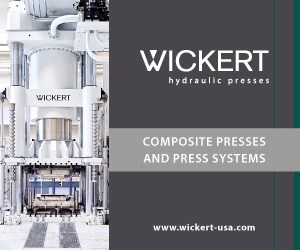On the radar: Reusable launch vehicles, hypersonics make space more accessible
CFRP has become key to targeting efforts in reusing components like rocket stages, as well as the development of reusable hypersonic testbeds and spaceplanes, for increasing space commercialization.
Space research over the past decade has increasingly focused on both deep-space exploration and satellite-based technologies. Notable achievements include NASA’s Mars rover missions, designed to explore the planet’s surface for signs of ancient life, and the growing presence of CubeSats, which aim to advance Earth observation. The push for lunar exploration, spurred by the Artemis program, also marks a resurgence in human spaceflight goals aimed at establishing a sustainable presence beyond Earth.
In the realm of launch systems, the development of reusable launch vehicles (RLVs) has been a pivotal trend. RLVs are designed to be returned to Earth and used multiple times, with the goal of making space more accessible. A key technology enabler is the use of carbon fiber-reinforced composites (CFRP), offering high strength-to-weight ratios and fuel efficiency gains. By incorporating materials like carbon fiber into the construction of rocket stages, for example, engineers have reduced overall launch costs while maintaining the durability and structural integrity needed for multiple launches. Innovations in hypersonic vehicles and spaceplanes with composite components are also driving the commercialization of space, making access to orbit more sustainable and economically viable.
SpaceX is a recent RLV example with its Falcon 9 and Starship platforms, though as of December 2018 the company decided to go with stainless steel over composites. Regardless, there are plenty of other examples in which composites have become a primary material of choice. Following these trends, CW has compiled a few recent announcements that reflect this increasing trend toward composites use in RLV, spaceplane and hypersonic efforts:
- Blue Origin’s (Kent, Wash., U.S.) New Shepard is said to use composite materials in its construction. It is a fully reusable suborbital rocket that can carry up to six passengers and cargo into a suborbital trajectory. This innovation targets space tourism.
- Electron and Neutron orbital launch vehicles by Rocket Lab (Long Beach, Calif., U.S.) both feature carbon fiber structures. Electron has delivered missions for commercial and government satellite operators, while Neutron targets mega constellation deployment, deep space missions and human spaceflight. Both rockets features a captive fairing design for a fully reusable first stage.
- Dawn Aerospace (ChristChurch, New Zealand) is developing the Mk-II Aurora, a rocket-powered spaceplane designed to be the first vehicle to fly to 100-kilometers altitudes — the edge of space — twice in a single day. Featuring a composite primary structure, its reusability will enable the aircraft for microgravity, high-speed flight research, Earth observation, and other defense and civil uses.
- The Aurora spaceplane by Polaris Raumflugzeuge GmbH (Bremen, Germany) is a reusable space launch and hypersonic transport system that operates like an aircraft, targeting routine low-cost and safe access to space. Its series of scaled flight demonstrators including MIRA — and now MIRA-II (VCN-007) and MIRA-III (VCN-008) — all feature an airframe made using glass fiber-reinforced composite sandwich construction.
- MT Aerospace AG (Augsburg, Germany), part of the European Space Agency’s (ESA) Future Launchers Preparatory Program, is developing reusable launchers with larger payloads. The COSTELAS project is developing composite structures that can save mass compared to metallic structures.
- Concepts for space launches with reusable carbon fiber-reinforced polymer (CFRP) payload fairings are being explored by international space supplier Beyond Gravity’s (formerly RUAG Space, Zürich, Switzerland). Unlike traditional fairings, the company says the payload fairing will remain attached to the first stage throughout the entire flight and re-enter the atmosphere with it for a soft landing.
- Stratolaunch (Mojave, Calif., U.S.) is a company that has been developing and testing the Talon reusable, air-launched testbed with a mission to enable rapid and iterative testing in the hypersonic environment. While Talon is not said to be composite, its launch platform, Roc, is. The company announced the completion of a captive carry flight with the first powered Talon-A hypersonic vehicle.
Stay up to date on what’s trending in composites. CW has previously compiled trends seen in biocomposites development, composite materials with thermal conductivity, life cycle analysis, automated wind blade repair, CFRP propeller production and graphene.
Related Content
Sulapac introduces Sulapac Flow 1.7 to replace PLA, ABS and PP in FDM, FGF
Available as filament and granules for extrusion, new wood composite matches properties yet is compostable, eliminates microplastics and reduces carbon footprint.
Read MorePlant tour: Collins Aerospace, Riverside, Calif., U.S. and Almere, Netherlands
Composite Tier 1’s long history, acquisition of stamped parts pioneer Dutch Thermoplastic Components, advances roadmap for growth in thermoplastic composite parts.
Read MoreBladder-assisted compression molding derivative produces complex, autoclave-quality automotive parts
HP Composites’ AirPower technology enables high-rate CFRP roof production with 50% energy savings for the Maserati MC20.
Read MoreOtto Aviation launches Phantom 3500 business jet with all-composite airframe from Leonardo
Promising 60% less fuel burn and 90% less emissions using SAF, the super-laminar flow design with windowless fuselage will be built using RTM in Florida facility with certification slated for 2030.
Read MoreRead Next
ILAuNCH explores 100% bio-epoxy resin suitability for space
Three partner universities in Australia aim to mature research for Change Climate’s Byoxy bio-epoxy resin formulation, relying on environmental simulation testing and structural composites expertise.
Read MoreComposites reinvent aerospace, AAM and space
Celebrating National Composites Week, CW shares ways in which composites continue to make a significant impact in aerospace and space market developments.
Read MoreComposite solar sail is deployed, sets sail in space
NASA ACS3 system made of flexible polymer and carbon fiber materials has successfully deployed its boom system, shows potential for future space operations.
Read More




















